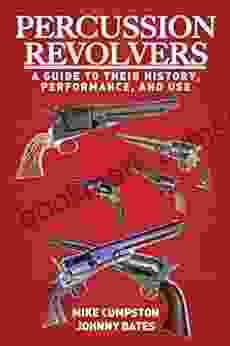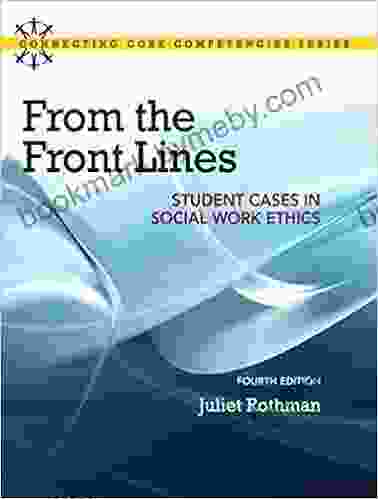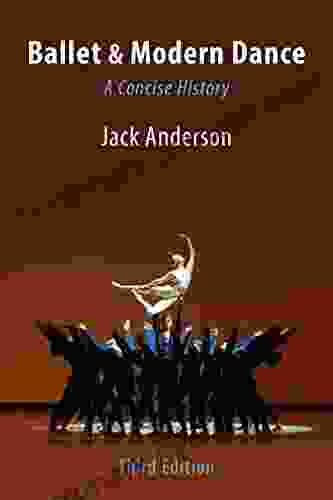Explore the Fascinating World of Fire Extinguishers: A Comprehensive Guide

Fire extinguishers are essential safety devices that play a crucial role in protecting lives and property from the devastating effects of fire. Understanding their history, performance, and proper use is of paramount importance to ensure their effectiveness in emergency situations. This comprehensive article delves into the multifaceted world of fire extinguishers, providing a detailed guide to their history, performance characteristics, and best practices for their use.
4.3 out of 5
| Language | : | English |
| File size | : | 13202 KB |
| Text-to-Speech | : | Enabled |
| Screen Reader | : | Supported |
| Enhanced typesetting | : | Enabled |
| Word Wise | : | Enabled |
| Print length | : | 208 pages |
Early History of Fire Extinguishers
The origins of fire extinguishers can be traced back to the 19th century. In 1819, Sir William Congreve invented the first known fire extinguisher, a hand-held device filled with a solution of potassium carbonate. This device was primarily designed for extinguishing incipient fires in confined spaces, such as chimneys and cabins.
In the 1830s, George Manby developed the first portable fire extinguisher designed specifically for ships. Manby's extinguisher consisted of a copper cylinder filled with carbon dioxide and was capable of extinguishing larger fires.
Modern Fire Extinguishers
The development of modern fire extinguishers accelerated in the 20th century with the invention of new extinguishing agents. In 1924, Pyrene Manufacturing Company introduced the first dry chemical fire extinguisher, which used sodium bicarbonate as an extinguishing agent. Dry chemical extinguishers quickly gained popularity due to their versatility and effectiveness on a wide range of fires.
In the 1950s, Walter Kidde & Company developed the first halon fire extinguisher, which used halogenated hydrocarbons as extinguishing agents. Halon extinguishers were particularly effective on electrical fires but were later phased out due to their environmental impact.
Today, a wide variety of fire extinguishers are available, each designed to extinguish specific types of fires effectively. Fire extinguishers are classified according to the type of extinguishing agent they use, as well as their performance characteristics.
Fire Extinguisher Performance Characteristics
Fire extinguisher performance characteristics are important factors to consider when choosing the right extinguisher for a particular application. These characteristics include:
- **Fire rating:** This indicates the type and size of fire the extinguisher is designed to extinguish, such as Class A (ordinary combustibles),Class B (flammable liquids),Class C (electrical fires),or Class D (flammable metals).
- **Capacity:** The capacity of a fire extinguisher refers to the amount of extinguishing agent it contains, measured in pounds or kilograms.
- **Range:** The range indicates the distance at which the extinguishing agent can be effectively discharged.
- **Discharge time:** This is the amount of time it takes to discharge the entire contents of the extinguisher.
- **Operating pressure:** The operating pressure refers to the internal pressure of the extinguisher, which is necessary to expel the extinguishing agent.
Proper Use of Fire Extinguishers
Using a fire extinguisher effectively requires proper training and technique. The mnemonic device **PASS** provides a step-by-step approach for using fire extinguishers:
- Pull the pin: This releases the safety mechanism and allows the extinguishing agent to be discharged.
- Aim the nozzle: Point the nozzle at the base of the fire, not the flames.
- Squeeze the handle: Discharge the extinguishing agent by squeezing the handle.
- Sweep side to side: Move the nozzle back and forth to cover the entire fire area.
It is important to evacuate the area immediately after using a fire extinguisher, as the fire may reignite.
Fire extinguishers are vital safety devices that play a crucial role in protecting against the dangers of fire. Understanding their history, performance characteristics, and proper use empower individuals to respond effectively to fire emergencies and minimize the risk of injury or property damage. By equipping ourselves with the knowledge contained in this comprehensive guide, we can ensure the safe and effective use of fire extinguishers, safeguarding lives and property from the devastating consequences of fire.
Image Descriptions
- Image 1: A historical image of Sir William Congreve's early fire extinguisher.
- Image 2: A modern fire extinguisher being discharged during a training exercise.
- Image 3: A diagram illustrating the PASS method for using a fire extinguisher.
4.3 out of 5
| Language | : | English |
| File size | : | 13202 KB |
| Text-to-Speech | : | Enabled |
| Screen Reader | : | Supported |
| Enhanced typesetting | : | Enabled |
| Word Wise | : | Enabled |
| Print length | : | 208 pages |
Do you want to contribute by writing guest posts on this blog?
Please contact us and send us a resume of previous articles that you have written.
 Book
Book Novel
Novel Page
Page Chapter
Chapter Text
Text Story
Story Genre
Genre Reader
Reader Library
Library Paperback
Paperback E-book
E-book Magazine
Magazine Newspaper
Newspaper Paragraph
Paragraph Sentence
Sentence Bookmark
Bookmark Shelf
Shelf Glossary
Glossary Bibliography
Bibliography Foreword
Foreword Preface
Preface Synopsis
Synopsis Annotation
Annotation Footnote
Footnote Manuscript
Manuscript Scroll
Scroll Codex
Codex Tome
Tome Bestseller
Bestseller Classics
Classics Library card
Library card Narrative
Narrative Biography
Biography Autobiography
Autobiography Memoir
Memoir Reference
Reference Encyclopedia
Encyclopedia Instafo
Instafo Jacob Gardner
Jacob Gardner Leah Buley
Leah Buley Julie Barlow
Julie Barlow John Elkington
John Elkington Jacob Brezinski
Jacob Brezinski Mary Engelbreit
Mary Engelbreit James Edward Austen Leigh
James Edward Austen Leigh James Carver
James Carver Magnus Unemyr
Magnus Unemyr Roy R Grinker
Roy R Grinker Isaiah Helekunihi Walker
Isaiah Helekunihi Walker Kimberly Brubaker Bradley
Kimberly Brubaker Bradley Jack M Bloom
Jack M Bloom Nabil Freij
Nabil Freij Jefferson Hawkins
Jefferson Hawkins Patrick Van Der Pijl
Patrick Van Der Pijl Jack Jackson
Jack Jackson William Wycherley
William Wycherley J C Cooper
J C Cooper
Light bulbAdvertise smarter! Our strategic ad space ensures maximum exposure. Reserve your spot today!
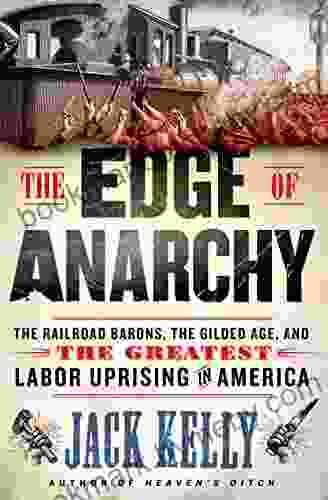
 Yukio MishimaThe Railroad Barons: Uncovering the Gilded Age and the Birth of America's...
Yukio MishimaThe Railroad Barons: Uncovering the Gilded Age and the Birth of America's...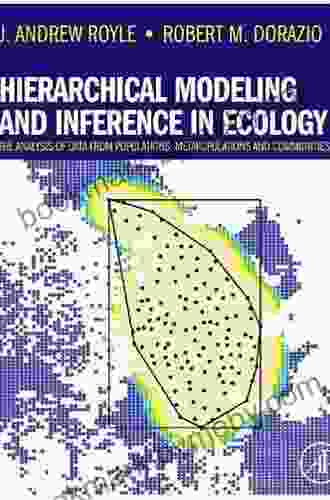
 Richard AdamsUnveiling the Complexities of Ecological Systems: Hierarchical Modeling and...
Richard AdamsUnveiling the Complexities of Ecological Systems: Hierarchical Modeling and... Asher BellFollow ·5.3k
Asher BellFollow ·5.3k Jared NelsonFollow ·10.6k
Jared NelsonFollow ·10.6k Carson BlairFollow ·6.8k
Carson BlairFollow ·6.8k Juan ButlerFollow ·6.5k
Juan ButlerFollow ·6.5k Allan JamesFollow ·14.4k
Allan JamesFollow ·14.4k Evan SimmonsFollow ·14.6k
Evan SimmonsFollow ·14.6k Bernard PowellFollow ·2k
Bernard PowellFollow ·2k Edison MitchellFollow ·9k
Edison MitchellFollow ·9k

 Phil Foster
Phil FosterThe Unforgettable Easter: Ramona's Journey of Discovery...
Embark on Ramona's Extraordinary Easter...

 Levi Powell
Levi PowellThe Old City and Mount of Olives: A Journey Through...
Jerusalem, a city etched into the annals of...

 Henry Hayes
Henry HayesThe Clearances: A Journey Through Scotland's Hidden...
In the 18th and 19th...
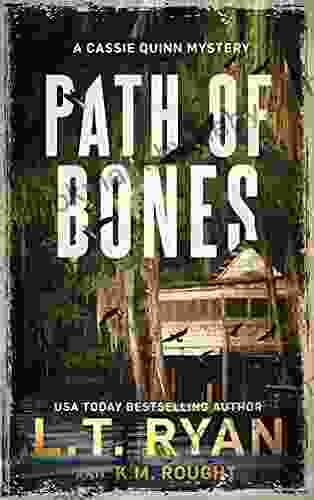
 Edward Reed
Edward ReedUnravel the Enigmatic 'Path of Bones' with Cassie Quinn...
Step into the...
4.3 out of 5
| Language | : | English |
| File size | : | 13202 KB |
| Text-to-Speech | : | Enabled |
| Screen Reader | : | Supported |
| Enhanced typesetting | : | Enabled |
| Word Wise | : | Enabled |
| Print length | : | 208 pages |


